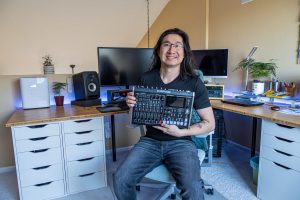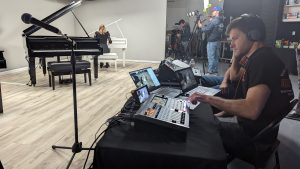- Rommel “RomeDigs” Reyes has a long relationship with Roland switchers—from the VR-3 to the V-160HD.
- Roland Pro A/V gear is behind all his broadcast media productions, from film, TV, and live music events to award shows and sports programs.
- He is active with several projects, including StageIt, a groundbreaking livestreaming platform.
Rommel “RomeDigs” Reyes rarely stops moving. In conversation, as well as life, his infectious energy bubbles over, filling the air. His love for audio and video permeates every aspect of his life. From installing video systems in venues to switching outdoor events for 10,000 attendees, a passion for A/V drives all the choices Reyes makes. The Bay Area resident cut his teeth during stints at KMEL radio and Apple. He’s now Executive Producer and Technical Director of the groundbreaking streaming platform, StageIt. Along the way, he’s utilized Roland switchers—starting with his trusty VR-3 and going all the way to the V-160HD. Reyes shares about his career, history with Roland, and how the V-160HD is working for him in the field.
Bay Area Beginnings
How did your A/V career begin?
I grew up in San Francisco and worked in Silicon Valley for ten years. I’ve always been fascinated by TV and film. I was that kid with the video camera. I was a consultant for a music label, and the parent company was the largest Filipino television media network in the United States. I’d always go back and forth to the TV department to see what they were doing, producing, editing.
That was in 2005. This took it to another level because I saw behind the scenes and how to put it all together with the proper tools. Then I jumped in, started researching how to run a broadcast, run cameras, put everything together. There are a lot of moving parts.
I’ve always been fascinated by TV and film. I was that kid with the video camera.
What did you learn from working at legendary Bay Area hip-hop station 106.1 KMEL?
Those were my college years, and I consider those five years my boot camp in the music industry. Guys like Sway—I was his little shadow. I did everything from answering the phones. In programming, I saw how records get on broadcast radio, music submissions, and meetings with record executives.
It was an education, finding out how to get things moving with marketing radio. We were producing Summer Jam concerts seeing how that comes together. It was huge to see the inner workings of how music gets played on the radio and how marketing ties in. I was hooked.
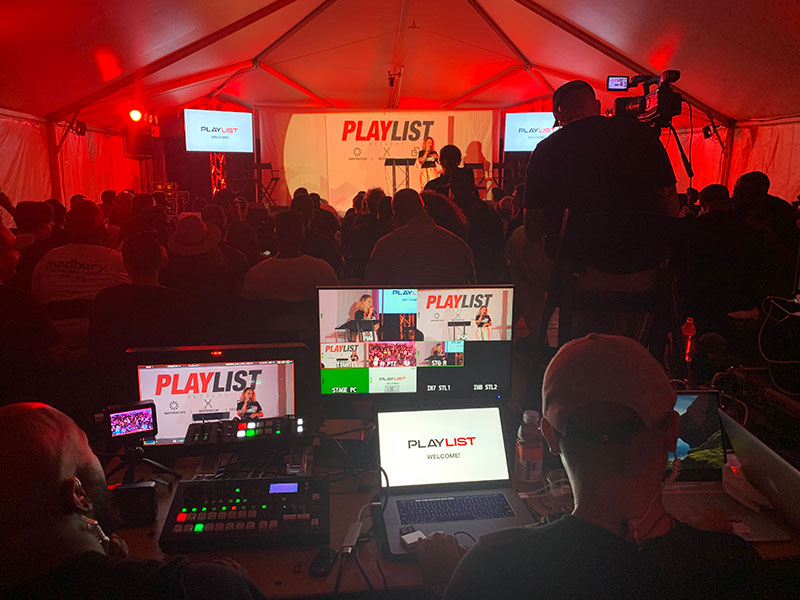
Rome + Roland
You have a long history with Roland A/V products. Can you tell us how that relationship has evolved?
Before meeting the team at Roland, I had an internet TV network. We were streaming shows Monday through Friday, and I had a little Roland VR-3. This was before we could do wireless broadcasting. It was awesome because I would take that everywhere, even to remotes. That thing was so awesome and sturdy.
Fast-forward to 2015, and I met the Roland team through Jazzy Jeff. I told them how much I loved Roland products and that I was touring with Invisibl Skratch Piklz as their technical director. I had the VR-4HD on the road with the V-1HD, and they saw me extend a four-input into an eight-input. They thought, “OK, this dude’s kind of creative with his switching set-ups.”
We built a relationship. They connected me with the tech support guys, and I would bug them all the time. I was adding all these different cameras. They knew I enjoyed what I was doing, so they were open to letting me pick their brains.
I still utilize the VR-4HD as my backup. It's my parachute, my security blanket. The audio inputs are great, and the video quality and keying are incredible.
What makes Roland gear so unique and essential to your work?
It all goes back to the TR-808. That’s how I learned about Roland. I’m a musician, and that thing was a beast—not only physically, but in terms of capability. From every producer back in the ’70s, ’80s, up to now, it’s the standard. I figured, if they were going to go into the Pro A/V side of things, it would be the same philosophy.
To this day, I still utilize the VR-4HD as my backup. It’s my parachute, my security blanket. The audio inputs are great, and the video quality and keying are incredible. How it connects to streaming is seamless. I’ve used Roland Pro A/V gear on all my broadcast media productions. They range from film, TV, and live music events to award shows and sports programs.
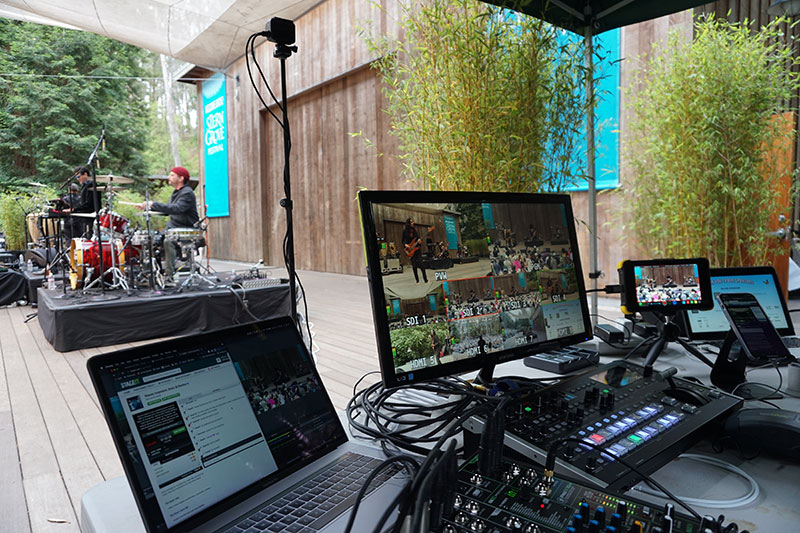
V-160HD in the Field
Describe the role the V-160HD plays in your setup right now.
The V-160HD is on steroids. That thing is incredible. It’s got everything you need: SDI inputs, HDMI inputs, special effects, sequences to control your camera’s graphics. When you get into it, you’re like, “This is a lifesaver.”
The first thing that we used it for is Stern Grove, a festival in San Francisco for three months during the summer. We’ve got Thundercat, Joan Jett, Thievery Corporation. I needed something that could handle eight inputs, SDI as well as HDMI, then go out to an LED screen that will showcase what’s going on stage. We’re also streaming live on the internet at the same time, plus using graphics and lower thirds.
Tell us about working A/V at Stern Grove and some of the challenges the V-160HD helped navigate.
There are fewer failure points now from my cameras, because of the SDI and HDMI inputs. I don’t need converters or adaptors anymore. It’s just a home run from the camera into the box. Also, with the capabilities for lower thirds, I store images and bring them up any time. It’s awesome. I have the Stern Grove audience, which is 10,000+. Then, we have a livestream audience to cater to as well, which can be 2,000 to 4,000 people. There are different commercials for different audiences, different branding.
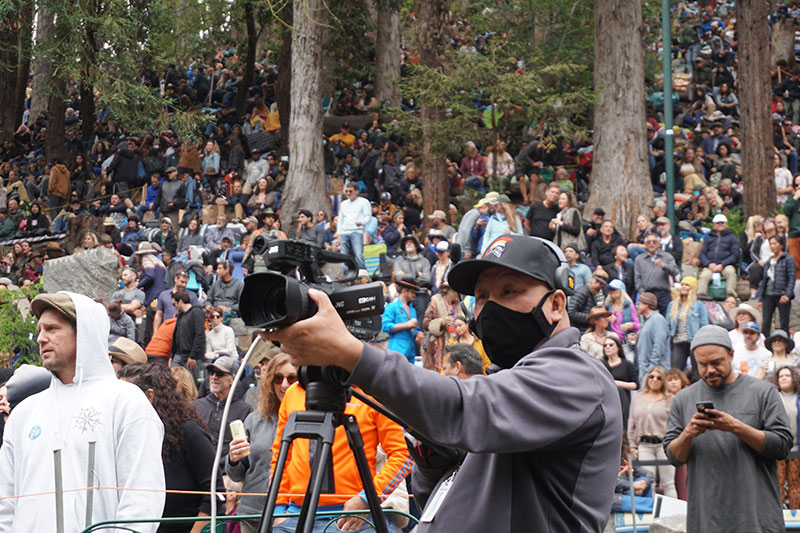
Busy with the Biz and Beyond
You’re active with several projects, including StageIt, a groundbreaking livestreaming platform. Do you have any advice for how to multitask as an artist?
Write everything down. When I was in Silicon Valley, I was part of the team Steve Jobs brought in when he became full-fledged CEO at Apple again. That team had to be on point, so I learned corporate skills because you couldn’t mess up at all. It’s about time management. I got introduced to The 7 Habits of Highly Effective People by Stephen Covey.
I begin with the end in mind, and I prioritize. It might sound a little hokey, but I listen to motivational tapes every morning. That helps me get in a mindset of creating, executing, and getting things moving. There’s a lot I want to accomplish.
When I was in Silicon Valley, I was part of the team Steve Jobs brought in when he became full-fledged CEO at Apple again. I learned corporate skills because you couldn't mess up at all.
Stageit has installed video systems in several music venues enabling them to go “hybrid.” How has that evolved over the past year?
I’ve always been about broadcasting and livestreaming. Years ago, I was talking about a place where people could create their own content without TV networks regulating. Concerts, variety shows, lifestyle programming, all kinds of stuff. Stephen White is the CEO, and when he took over StageIt, he brought in a new team to amplify it and take it to the next level.
We had the foresight pre-Covid and realized we need to be in everything. So, we created a venue program. Every club/venue should have the ability to stream content, now more than ever. With a global audience, you’re missing out on folks that truly want to see live acts, and with COVID being uncertain, it’s definitely another way to monetize and keep revenue flowing.
At StageIt, we can geofence to create a regional filter of who can purchase livestream tickets to assure the venue can sell out their “in real life” person tickets. It was our first, and it was our proof that the hybrid model works on a huge scale.
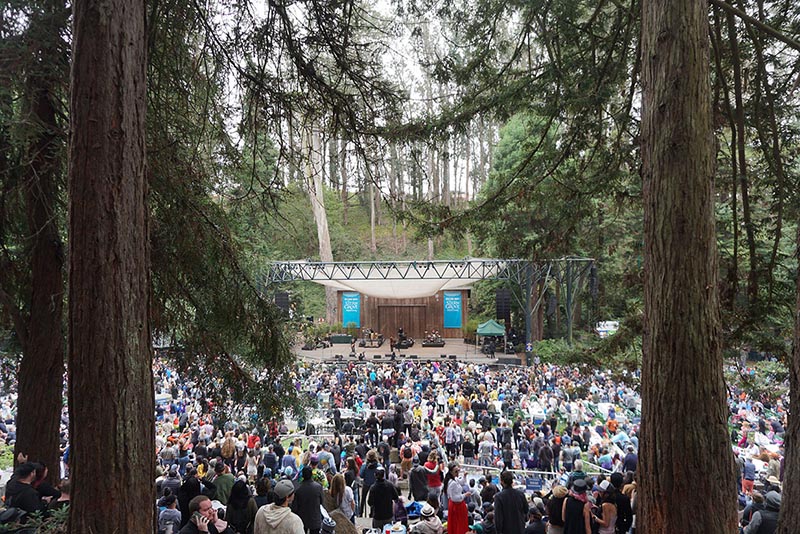
Consulting and the New Model
You’ve consulted with many artists about how they will be returning to live performance and continue to stream online. What trend are you seeing from these artists going forward?
Everyone got shut down and had no idea what to do. We’re not just talking about independent artists. We’re talking about legacy, Grammy Award-winning, Hall of Fame artists. When we started consulting, we were on the phone with agencies and artists. They never even thought about monetizing livestreams before.
We showed them how to do it with simple tools like USB cams, OBS, and GO:MIXER PROs. At StageIt, all you need is your laptop camera and internal mic. Next thing you know, they’re making thousands of dollars off a 30-minute show. They didn’t have to leave home and were in control creatively and financially. Soon, they were doing this every week and it was a viable source of income during a lockdown. They loved it, and their audiences loved it.
With the return of concerts, it’s a busy time in live music. What’s coming up and where should artists and producers put their focus?
We’ll be adding more venues. There’s a new model, and a global audience is waiting to watch a show. There are fandoms out there and not only in the United States. StageIt is in 135 countries. People want to see incredible artistry and want to follow their favorite group. I wouldn’t concentrate on the $70 to $120 ticket. Concentrate on the $5 ticket to 20,000 people watching a livestream.
Everyone is in this one space feeling this one way at this particular time. It's the most magical thing. I'm addicted to it.
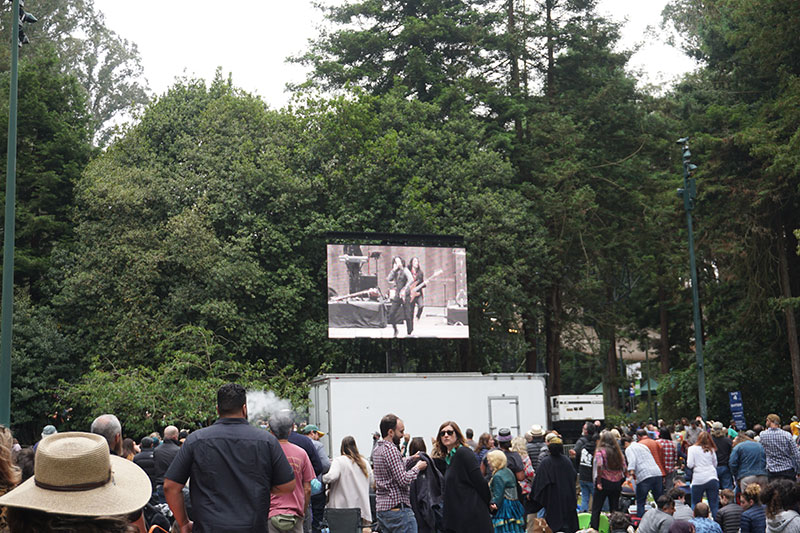
The Audio-Visual Life
What are some of the most gratifying elements of your work in A/V?
I have the best seat in the house. I’ve been blessed to be around some amazing once-in-a-lifetime artists—from Stevie Wonder to up-and-coming artists/producers you’ve never heard before. I get to experience those vibrations and watch it raw. I’m there at soundcheck. I’m there at the performance. I get to see them live on stage and then see the audience’s perspective and work with the lighting technician, work with the audio technician, work with everyone to create this amazing time.
These artists lift people out of whatever they’re going through. Everyone is in this one space feeling this one way at this particular time. It’s the most magical thing. I’m addicted to it.

